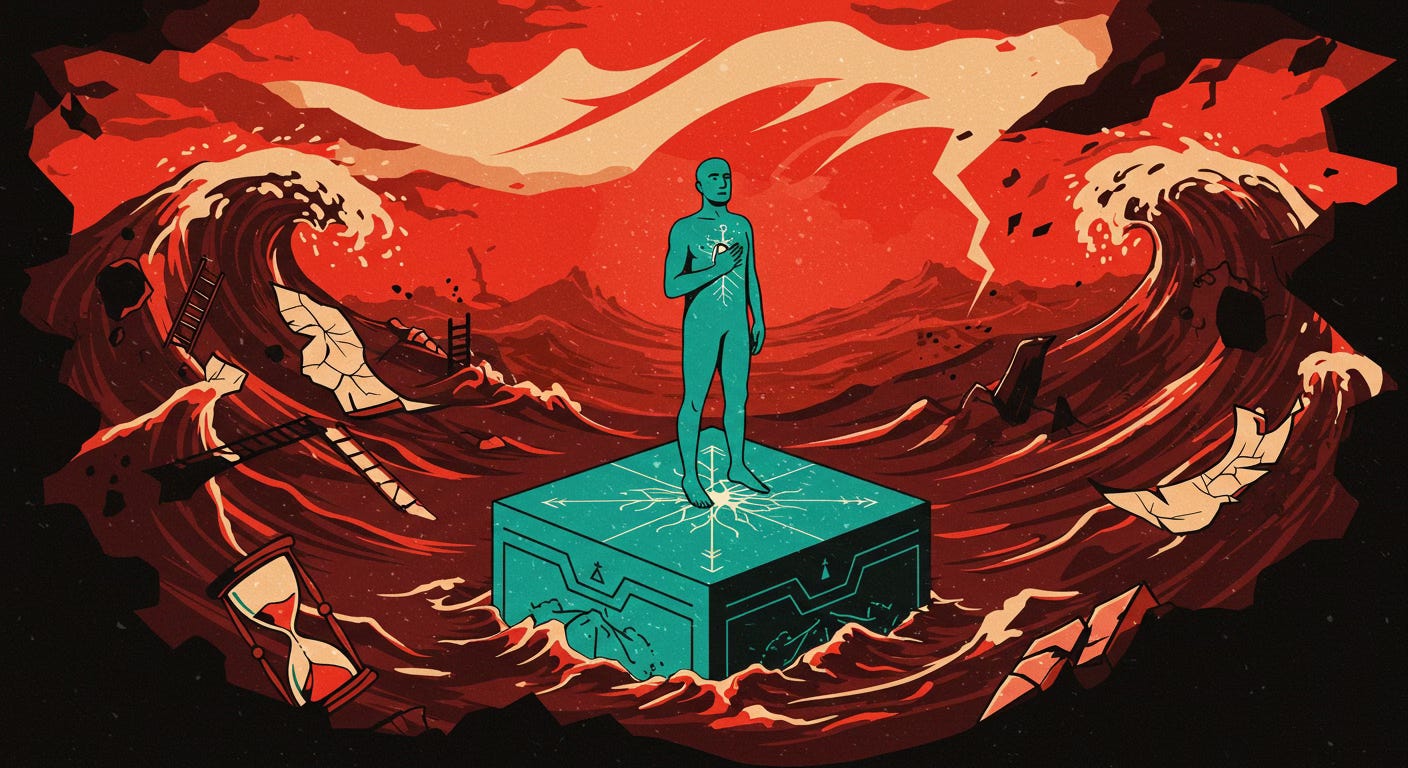My previous article entitled “The Variable Geometry of Selfhood: Facing an Infinite Void with a Single Anchor Point” likened self-definition to anchoring a fixed point within an infinite void—a lone certainty within a sea of flux. Yet as vital as that first act of self-definition is, the real challenge begins afterward: maintaining the integrity of that anchor point amid relentless external forces. Life does not leave us in peace once we decide who we are. On the contrary, it immediately begins to test that identity, stretching and challenging it like a sail against the wind. In such conditions, the firmness of one’s anchor becomes not only a metaphor for inner clarity but a condition for psychological survival.
To define oneself is to articulate a vision of one's core values, one’s role in the world, one’s internal compass. But sustaining this definition requires conscious resilience. As Ralph Waldo Emerson noted, “To be yourself in a world that is constantly trying to make you something else is the greatest accomplishment.” This is not a passive endurance; it is an active and continuous recalibration—without losing the essence of that initial self-definition. One must not only name one’s anchor but nourish and reinforce it.
Modern society offers countless incentives to drift. Economic hardship may push a person to adopt roles they neither want nor respect, diluting their internal compass in the name of practicality. Social media normalises comparison on an industrial scale, drawing individuals into measuring themselves not against their own values but against curated images of others’ lives. Familial pressures, too, can subtly coerce individuals into roles of quiet conformity, especially when those roles are culturally or emotionally sanctified. The anchor must endure not only visible storms but also the quiet erosion of subtle, daily compromises.
Keep reading with a 7-day free trial
Subscribe to Badis Tabarki to keep reading this post and get 7 days of free access to the full post archives.

